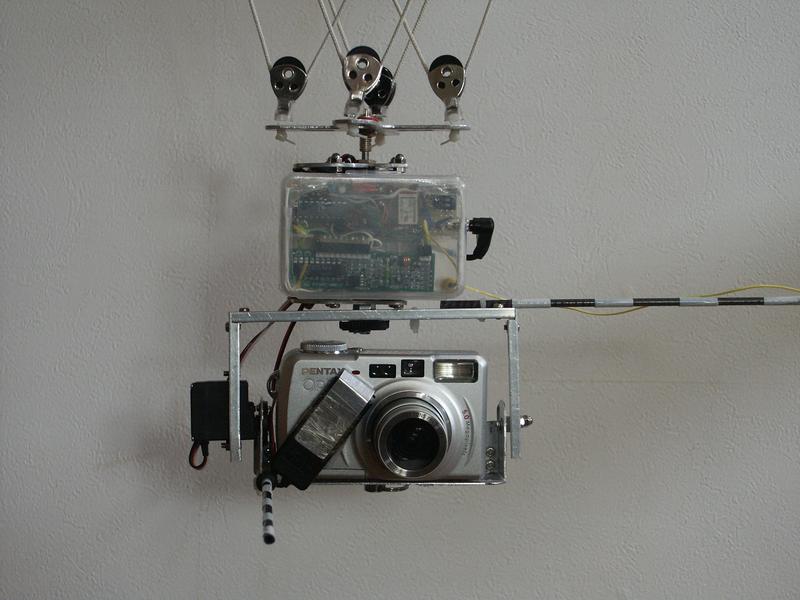
SmartRig
with PIC16F628 microprocessor
Three radio control buttons and a mercury level switch activate the camera shutter and the pan and tilt servos. There is a rapid timer, a pan-timer and a horizon mode which is invoked to ensure straight pictures when the camera's view is high enough to includes the horizon. A video economy switch conserves power by shutting down after a period of inactivity. Likewise servos are only powered when in use.How the three button radio control system is used:
• If one button is on you cannot turn another one on. But you can turn any two of them on together so that there are effectively 6 on/off combinations.
• A brief push of button A takes a picture but if you hold it down for more than 2 seconds an interval timer takes over triggering the shutter every few seconds. The next push of A stops this timer.
• B and C either pan in both directions or change the tilt. By pushing B+C together you toggle between these alternatives.
• The combination A+B starts the 'panorama' timer whereby the rig takes a picture pans a bit, stops, takes another picture, pans a bit more, etc until stopped by the next push of A.
• The A+C combination has been used for a sort of robot-like directional bracketing. Working on the principal that I often completely miss the target I'm trying to point at I have used it to take 9 shots where 1 was needed on a sort of shotgun basis.
• Having just 3 butons is by no ways restrictive. Not only can changes can be made by long pushes, double pushes, etc, but by also using dip switches, of which there are 4, things like timer settings can be changed between flights. How the horizon mode works.
• With a camera which is continuously swinging around and occasionally looping the loop this this feature helps keep pictures looking straight.
• The 'horizon switch' is in fact two mercury switches joined in series and mounted so that they are both closed only when the camera's view of the horizontal is straight.
• When button A, or a timer, calls for a picture the shutter is delayed until the camera next swings through a horizontal position.
• Often there is no need for a delay and the picture is instaneous. However the 'waiting for level' state is timed to cut out after a short period and a picture is taken whatever. If the camera is pointing downwards and unlikely to include the horizon this mode is automatically disabled. The camera is a Pentax Optio 555 triggered by a modified infra-red controller which is attached to the camera with velcro. This is a great 5 megapixel camera with an interval timer which has a delayable start. It can be set to intervals of 10 seconds or greater. The software programme for the pic is written on a Linux pc in JAL and looks like this. JAL turns it into a hex file which is downloaded to the pic with an inline Wisp628 programmer. Total weight is 604 grms.
| 